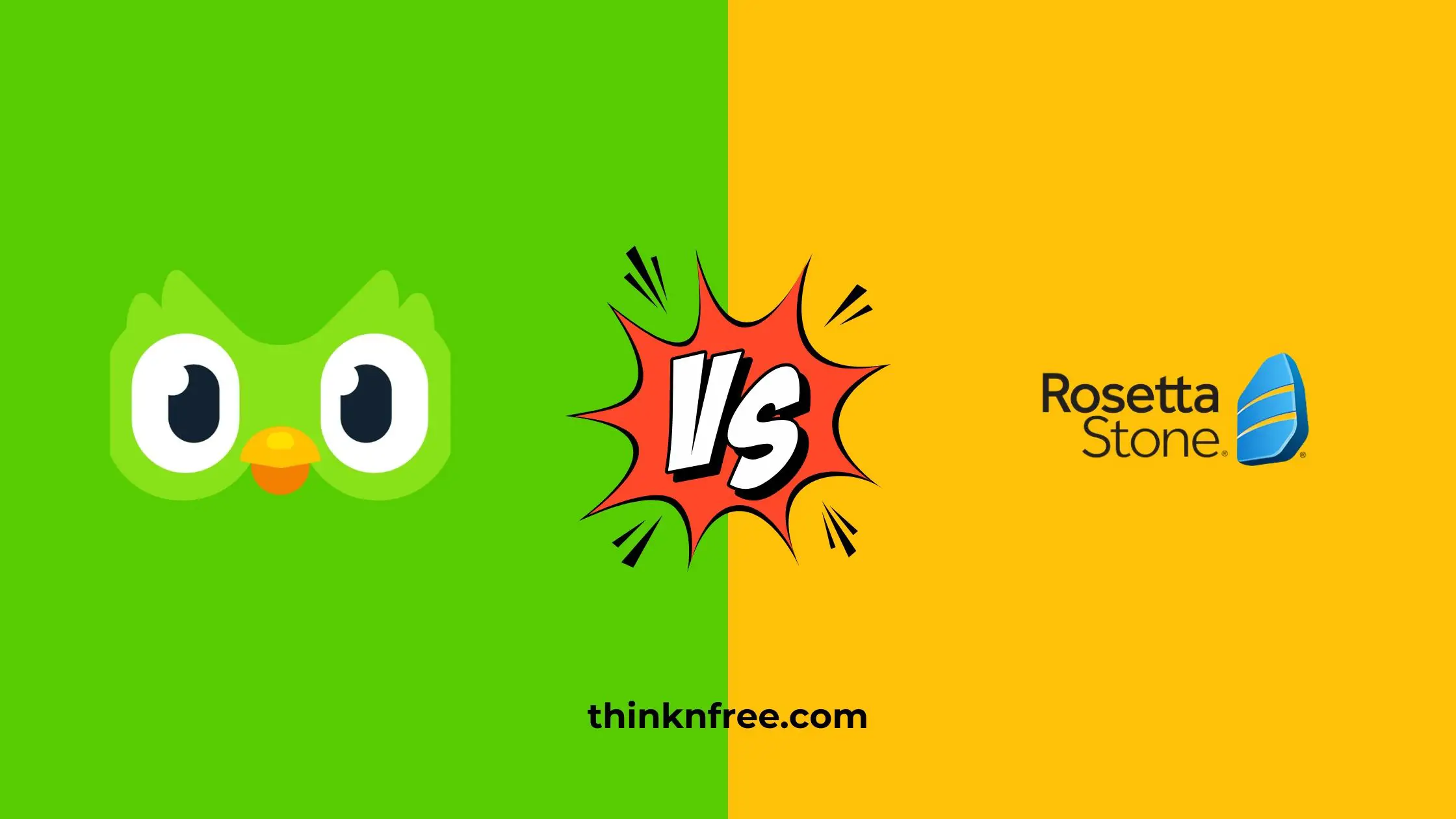The age-old debate in the world of language learning apps revolves around Rosetta Stone vs. Duolingo. Both these platforms have garnered massive popularity for their innovative approaches to language acquisition. Given that they cater to various learning styles and goals, choosing amongst them might be difficult. We will analyze the benefits and drawbacks of each in this thorough guide to assist you in choosing the approach that will best serve your language learning objectives.
What The Rosetta Stone Lessons Are Like
To understand the core of Rosetta Stone, it’s essential to delve into the structure and format of their lessons. Each Rosetta Stone module consists of one core 30-minute lesson that can be divided into three 10-minute mini-sessions or followed by 3 to 15 supplemental drills. These drills typically span 5 to 10 minutes and cover aspects like pronunciation, listening, grammar, and writing. The essence of Rosetta Stone lessons lies in a blend of images and audio. You spend the majority of your time listening to words or phrases, repeating them, and connecting them to corresponding images. Essentially, the lessons and drills resemble interactive flashcards. For instance, if you’re learning Portuguese, you’d hear a native speaker say “o homem corre,” and you’d match it with an image of a man jogging. Rosetta Stone gradually builds your language skills from one- or two-word building blocks to more complex sentences as you advance.
Evaluation of The Rosetta Stone Program
- Better For Visual Learners: Rosetta Stone’s heavy reliance on imagery makes it an excellent choice for visual learners who thrive on connecting words with visuals. If you learn best by seeing and mentally associating words with pictures, Rosetta Stone is your go-to platform.
- Voice Recognition Technology: Rosetta Stone boasts its TruAccent voice recognition technology, which listens as you repeat words or phrases. If you mispronounce a word, it prompts you to try again. While not flawless, it’s an impressive tool for honing pronunciation.
- Bonus Resources: Rosetta Stone offers a wealth of additional resources. On-demand videos provide cultural insights, short stories enhance reading and listening skills, phrasebooks perfect pronunciation, and an Alphabet tool aids writing fluency. These resources enrich your language journey.
- Live Classes: For those seeking fluency, Rosetta Stone offers access to live classes and coaching, a feature Duolingo lacks. While it comes at an extra cost, the personalized coaching sessions can significantly enhance your learning.
- Greater Flexibility: Rosetta Stone offers more flexibility than Duolingo, allowing you to jump between courses and focus on specific areas, giving you control over your learning path.
Related article: Learning the German Language from Scratch
What The Duolingo Lessons Are Like
Duolingo’s lessons contrast with Rosetta Stone in several ways. They are shorter, typically taking 5 to 10 minutes to complete. Duolingo’s lessons are comprised of various interactive exercises, including listening drills, fill-in-the-blanks, matching pairs, verbal practice, and writing sentences.
Evaluation of The Duolingo Program
- The Free Version: Duolingo’s standout feature is its free plan, making language learning accessible to all. However, the free version is ad-supported and has limitations, like a restricted number of “hearts” and “test outs.”
- Great Variety: Duolingo excels in offering a variety of lessons and exercises, keeping learners engaged through diverse perspectives and drills.
- Gamifying Learning: Duolingo gamifies learning, awarding experience points and lingots (in-app currency) as you progress. It fosters a fun and competitive learning environment.
Cost Comparison:
Both platforms offer paid plans, with pricing closely aligned. Rosetta Stone provides monthly, yearly, and lifetime subscriptions, with the latter granting access to all languages. The Super Plan, Duolingo’s premium membership, is about $7 to $8 per month. The free trial time for Duolingo is also available, however Rosetta Stone includes a 30-day money-back guarantee.
Related article: Learn Spanish: Your Comprehensive Guide to Getting Started
Verdict: Duolingo or Rosetta Stone?
In conclusion, the choice between Duolingo and Rosetta Stone depends on your learning style and goals. Duolingo is great for casual learners, budget-conscious individuals, or those seeking a supplementary resource. On the other hand, Rosetta Stone offers a more comprehensive and flexible learning experience, making it ideal for visual learners, serious language learners, and those willing to invest in extra resources.
Ultimately, the decision comes down to your preferences and commitment level. Both platforms have their merits, but Rosetta Stone emerges as the preferred choice for those dedicated to achieving intermediate language proficiency.
FAQ:
Is Rosetta Stone better than Duolingo?
Yes, Rosetta Stone is generally considered better than Duolingo due to its comprehensive approach to language learning.
Duolingo vs. Rosetta Stone, which is better for travel?
Rosetta Stone is better for travel if you aim to achieve a beginner to intermediate level of proficiency in a short time.
Duolingo or Rosetta Stone for learning Spanish?
For learning Spanish, Rosetta Stone is recommended over Duolingo for its more robust courses.
Between Duolingo and Rosetta Stone, what is the difference?
The main difference lies in their approach: Duolingo is gamified and suited for beginners, while Rosetta Stone emphasizes imagery and suits visual learners better.
I’m an undergraduate and network engineer with a passion for learning new cultures and languages. I love connecting with people from different backgrounds and exploring diverse perspectives.


1 thought on “Rosetta Stone vs. Duolingo, A Comprehensive Comparison Review”